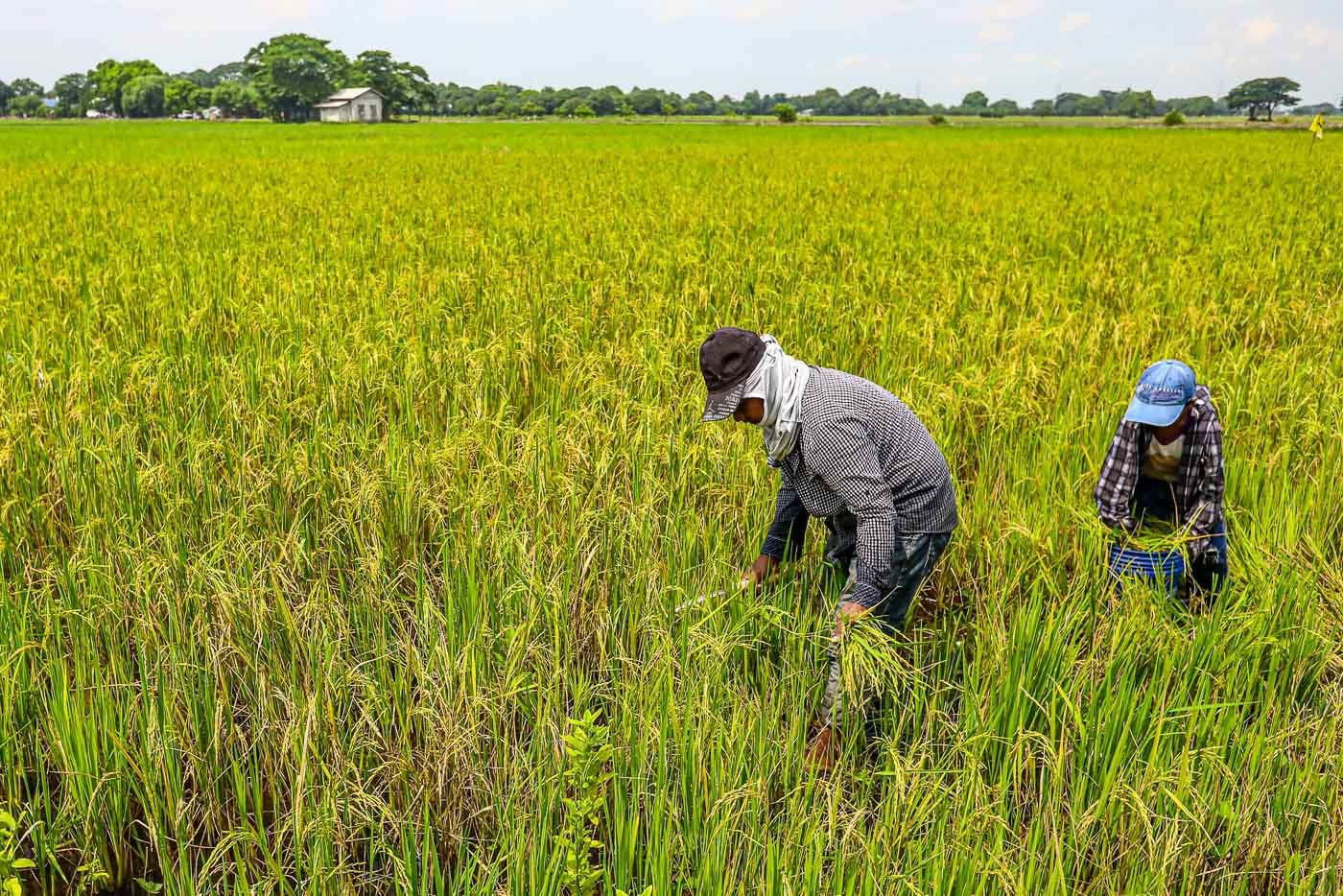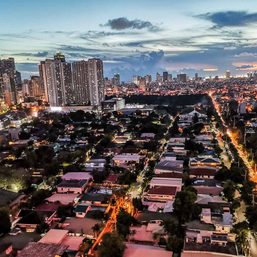SUMMARY
This is AI generated summarization, which may have errors. For context, always refer to the full article.

CAGAYAN DE ORO CITY, Philippines – Business leaders in Northern Mindanao have expressed high hopes over President Ferdinand Marcos Jr.’s promise to prioritize agriculture and food self-sufficiency during his six-year administration, but they also want to hear specifics.
Marcos, who took it upon himself to lead the Department of Agriculture (DA), has ordered a sweeping review of all projects and programs of the department to identify how it could effectively help local food producers and bring down the prices of commodities.
He has also ordered agriculture officials to devise a strategy to help farmers ramp up their production, particularly rice, and transport these to trading posts amid the surge in the prices of fertilizers and fuel.
Specific actions
Ruben Vegafria, the regional governor of the Philippine Chamber of Commerce and Industry (PCCI) in Northern Mindanao, said his group was looking forward to what specific actions Marcos would take to address the problem of the high costs of agricultural inputs.
Similarly, Cagayan de Oro Chamber of Commerce and Industry (Oro Chamber) chairman Efren Uy, said the Marcos administration can opt to give tax exemptions on all farm inputs and agricultural machinery to lower the production costs of food products for starters.
Uy is also a former president and the spokesperson of Misamis Oriental Filipino-Chinese Chamber of Commerce and Industry Incorporated, while Vegafria is the chairman of the Mindanao Food Congress.
“As part of his election campaign pitch, President Marcos already saw the problem of agriculture and food sufficiency of our country. His taking the agriculture portfolio was no surprise to us. It signaled his sincerity to bring more and cheaper food to every Filipino family’s table,” said Oro Chamber president Raymundo Talimio Jr.
Talimio, however, said he was perplexed by Marcos’ economic managers like Finance Secretary Benjamin Diokno who said the new administration’s priorities would be health, education, and infrastructure.
“The business sector is eagerly waiting for the President’s first SONA (State of the Nation Address) with a hope that he will debunk Diokno’s pronouncements and push for agriculture’s sustainability and sufficiency first,” Talimio said.
Aside from prioritizing agriculture concerns, Uy said his group also wanted to hear more enhanced economic policies, incentives, or tax reliefs for fast recovery.
He called for a diligent review of all loan agreements whether government-to-government deals or with financial institutions.
“I believe he is trying his best to pursue his agenda of unity and his nomination of various Cabinet members who may not have been in his camp during the last elections gives us hope that a unified administration will eventually lead to the country’s economic recovery after the COVID pandemic. As patriots for our country, let us all join hands to ensure that our nation moves forward and not look back,” said Elpidio Paras, the president of Promote Normin Incorporated.
Not out of the woods yet
While Northern Mindanao’s economy has been steadily recovering from the effects of the global pandemic, it’s not out of the woods yet.
Mylah Faye Aurora Cariño, the regional director of the National Economic Development Authority, said the agriculture sector was the third top contributor to Northern Mindanao Region’s growth in 2021 with 3.8%.
Cariño said the region’s agriculture sector has also remained one of the region’s top employers with a workforce of 38%
She, however, said Northern Mindanao’s labor productivity ranked lowest at 64% lower than industry, 40% lower than services, and 36% lower than the regional average.
The government’s agricultural programs for the region are for rice, corn, high-value crops, and livestock. Large portions of land dedicated to agriculture are used to grow coconut, bananas, pineapple, corn, and rice.
Data from the Philippine Statistics Office showed that the region’s unhusked rice production in 2021 increased by 1.51%, with an annual average yield of 2.27% higher at 4.78 metric tons per hectare, and an 85.7% regional average annual rice sufficiency.
Corn production fared better with white corn and yellow corn production higher by 20.54% and 33.32%, respectively. This enabled the region to attain a corn surplus with a sufficiency level of 144.32% in 2021.
In 2021, poultry and livestock weight volume grew by 1.20% to 495,720 MT with all livestock and poultry commodities increasing, except for chicken.
Bananas accounted for 53.9% of the region’s total production of major fruit crops, followed by pineapple with 1.668 million MT or a 44.6% share, and a combined 1.5% share for calamansi and mangoes.
Cassava registered the biggest share at 85.8% or 675,888 MT of the total production of major vegetables and root crops in Northern Mindanao.
Sugarcane accounted for 67.1% of the total regional production for selected non-food and industrial crops and had the biggest gain in production in terms of volume at 642,205 MT, although dried raw fiber grew fastest at 24.4%.
While aquaculture had the biggest share of the total fisheries production in Northern Mindanao at 46.3%, it also recorded the biggest drop at -21.6%, equivalent to 15,111.87 MT.
The volume of fisheries production dropped 16.3% to 118,112.40 metric tons in 2021, with all fisheries subsectors decreasing production during the period.
Highest growth rate outside NCR
Overall, however, the region was the seventh biggest regional economy in the country, accounting for 4.7% of the country’s Gross Domestic Product (GDP) in 2021.
With a 5.1% growth in its per capita gross regional domestic product (GRDP), Northern Mindanao had the second highest in the Philippines – and highest outside the National Capital Region (NCR).
It was also one of the nine regions to surpass the Philippines’ growth of 5.7% with 6.3%, and the only one of four regions with an economy that rebounded to pre-pandemic levels in 2021.
Agriculture Undersecretary for consumer and political affairs Kristine Evangelista said Marcos has ordered the DA to study how best to raise farm production while tempering the cost of production by stabilizing the supply of commodities which would redound to affordable prices for end users.
Evangelista also said the promise of ensuring food security not only covers a sufficient rice supply, but prime commodities such as pork and poultry, eggs, and vegetables as well. – Rappler.com
Add a comment
How does this make you feel?


![[Tycoon Tales] The Gothong clan](https://www.rappler.com/tachyon/2024/02/PanglaoBay1_-CarlosAGothongLinesInc.jpg?resize=257%2C257&crop=288px%2C0px%2C792px%2C792px)







![[In This Economy] Marcos’ POGO ban is popular, but will it work?](https://www.rappler.com/tachyon/2024/07/thought-leaders-marcos-pogo-ban.jpg?resize=257%2C257&crop=255px%2C0px%2C720px%2C720px)
![[Rappler Investigates] POGOs no-go as Typhoon Carina exits](https://www.rappler.com/tachyon/2024/07/newsletter-graphics-carina-pogo.jpg?resize=257%2C257&crop=424px%2C0px%2C1080px%2C1080px)












There are no comments yet. Add your comment to start the conversation.